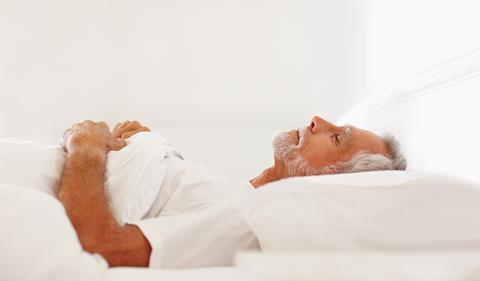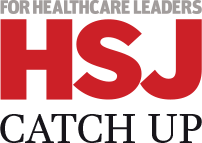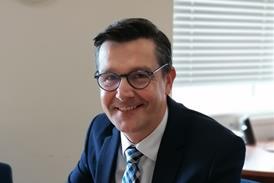How can the 1.4m undiagnosed sleep apnoea sufferers in the UK be identified and managed? By Alison Moore

Sleeping man
Sleeping badly is a common occurrence – but for hundreds of thousands of people a common sleep disorder not only affects their everyday life but could threaten their future health.
Obstructive sleep apnoea (OSA) causes the muscles in the throat to relax and the sleeper to temporarily stop breathing. When they recommence breathing they wake for a split second, although they are usually unaware they have woken. Sufferers may experience this hundreds of times a night, leaving them extremely tired and prone to falling asleep during the day.
Sufferers are predominately men, often overweight and middle aged; many of them are not even aware they are waking frequently at night but are likely to complain of persistent daytime tiredness. They always snore, though not all snorers have OSA.
Raising awareness
Diagnosis can be difficult and patients are often repeatedly tested for other conditions. Kath Hope, who was diagnosed in her 40s, says: “My exhaustion at times caused me to collapse and each time I was tested for various medical conditions – anaemia, glandular fever, hypothyroidism, diabetes – and at one point even leukaemia.”
‘We are working with secondary clinicians where we are able, to look at how they can encourage their local GPs to get involved’
Looking back, she believes she has suffered from the condition all her life and suspects her mother, who died of a heart attack at 49, may also have had it. When she was finally tested, she was found to stop breathing 30 times an hour.
Untreated sleep apnoea is linked to other serious conditions, including type 2 diabetes, cardiovascular disease and hypertension. It can also significantly raise the risk of being involved in a road accident, making it a particular concern for those who drive for a living.
This has significant implications for the NHS – the cost of treating the comorbidities which may be worsened by sleep apnoea is significant. It is also facing a potential increase in the number of sleep apnoea cases as obesity increases.
The Sleep Apnoea Trust Association (SATA) estimates that there may be 1.4m sufferers yet to be diagnosed in the UK – with only 400,000 already identified. The numbers of people undergoing sleep studies and then being prescribed equipment to help has also risen dramatically over the last few years.
The NHS faces challenges in dealing with the growing number of cases and with increasing awareness of the condition. Unfortunately, existing services do not always mirror the areas of greatest need. A recent paper in the journal Thorax mapped the likely prevalence of OSA against the availability of sleep services – showing that East Anglia, the north west and Wales were particularly badly served.
Penny Woods, chief executive of the British Lung Foundation (BLF), says the research is a “wake up call” for the government and NHS. “We need to improve access to treatment and diagnostic services, and to raise awareness of the symptoms and dangers of untreated OSA,” she says.
The BLF has been campaigning for improved screening and more comprehensive and consistent access to sleep clinics. Judy Harris, project delivery manager at BLF, says this does seem to have had results but the charity is conscious that greater awareness could lead to services being stretched and has been talking to commissioners and providers about this.
For most patients, diagnosis of sleep apnoea will start with a visit to their GP. Many primary care doctors will carry out initial screening tests and then refer on for a definitive diagnosis. But a few are happy to run an initial overnight pulse oximetry test themselves and then pass these onto specialists.
Ms Harris says GPs’ levels of awareness of OSA will differ. “We are working with secondary clinicians where we are able, to look at how they can encourage their local GPs to get involved,” she says.
Limited resources
Most patients with suspected OSA will be sent to a sleep clinic, usually in a department of respiratory medicine. The Thorax research showed access to these is variable across the country and does not correlate with the risk factors for OSA in the local population – Ms Harris points out that many urban areas with relatively young populations are well served, while rural areas with a higher incidence of patients at risk are not. Only around 50 centres can handle complex cases, she adds.
‘Sleep clinics have so many people coming in they don’t have the resources to see people for reviews, so they have to discharge them or look at other ways of managing them’
“A lot of sleep clinics have so many people coming in they don’t have the resources to see people for reviews, so they are having to discharge them or look at other ways of managing people on treatment,” she says.
Patients are often treated using continuous positive airway pressure (CPAP) machines, which keep the airways open at night and involve wearing a mask. These have been recommended by the National Institute for Health and Care Excellence for moderate to severe sufferers; the NICE assessment also suggests CPAP therapy is extremely effective in terms of clinical outcomes and cost.
Patients using CPAP machines need monitoring and help if the machine breaks down or they are finding it difficult to cope with. In many areas, this may mean they have to make another hospital appointment, increasing pressure on hospital services.
Will increased awareness and diagnosis of sleep apnoea mean the way in which the service is provided needs to be reconsidered? GPs could potentially become more involved in screening, diagnosis and monitoring of less severe cases. This could reduce costs and also ensure a more local service for patients who might otherwise have to travel some distance.
Some sleep clinics are already using private partners such as Philips to help with monitoring of less-complex patients. The company provides and maintains the CPAP equipment – which means the hospital’s capital budget is not eaten up by buying additional machines – and offers a replacement service, usually within two working days, if one is out of action.
Philips – through its Management of Specialist Therapies (MOST) service, which can cover everything from screening through to diagnosis and therapy management – also runs a helpline and retrieves information about an individual’s sleep from the machines. Allowing someone else to take on these more routine tasks can free up specialists’ time to see new referrals and more complex patients.
The scheme, which has featured in the Department of Health’s Partners in Delivery programme, is offered at a fixed cost per patient per month.
‘Workplace screening. This could be particularly important with high risk groups such as lorry drivers’
Some companies are also becoming more aware of the potential risks of OSA to their employees and are looking at workplace screening. This could be particularly important with high risk groups such as lorry drivers: the British Sleep Society has been campaigning for them to be screened.
Philips has surveyed a large number of its own employees and found that 6.4 per cent had OSA – 78 per cent of these were unaware of it – and is now committed to screening 1m people worldwide through a web-based assessment.
Such changes may be the best way to enable the NHS to screen more people and support those who are diagnosed with sleep apnoea, while ensuring that more complex cases still get specialist input. And they may be necessary if existing services are not to be swamped.
“The NHS as it stands at the moment would not be able to cope if everyone with OSA turned up,” says Ms Harris.
CPAP case study: Bradford
Patients in Bradford get access to a comprehensive sleep service involving consultants from different specialities and specialist nurses – and can be offered treatment within days. The service at Bradford Teaching Hospitals Foundation Trust has seen a steady rise in patient referrals since it was set up several years ago. Consultant anaesthetist David Dawson, one of the few anaesthetists involved in sleep services in the UK, works alongside Dr Dinesh Saralaya, a consultant in respiratory medicine.
‘One issue affecting the development of services is the lack of a tariff for diagnosing and treating patients with CPAPs’
Their referrals come from GPs as well as from doctors in other specialities who have seen patients referred to them who have turned out to have an underlying problem with sleep apnoea. For example, many patients who wake repeatedly at night end up going to the toilet – and that frequency of night-time urination can often lead to a referral to an urologist. Patients who complain of being excessively tired during the day may be referred to an endocrinologist.
“Often these patients have been investigated by other specialities but the underlying problem is sleep apnoea,” says Dr Dawson.
“We estimate our practice has grown by 200 patients a year,” adds Dr Saralaya. “We take pride in the service we provide to our patients - we have one of the shortest waiting times in the region.”
Diagnosis is only the first step. Once diagnosed, it is important to start treatment as soon as possible, says Dr Saralaya. At the Bradford service, this can be within 48 hours – particularly important for patients for whom the diagnosis affects the ability to work, such as lorry drivers. Once treatment has started many will be able to return to work within a very short time.
When the service was set up in 2009, the trust made the decision to go out to tender for a partner that would provide the CPAP equipment. This tender was awarded to Philips which, through its MOST service, provides the equipment, receives data on the patient’s sleep patterns, and runs a helpline for patients having difficulties with their mask.
From the trust’s point of view, the involvement of a private partner meant it did not have to make the capital investment in equipment at the point at which the service was being set up; it is effectively renting the equipment. This lack of capital expenditure was important in getting the service off the ground, says Dr Dawson.
Making good use of the equipment is important – patients who do not engage with the service and use the equipment are obvious, as they have to send back data regularly on an SD card (the use of text messages is also being piloted), and those not using the device have no data to send. If they are not using it then there is an opportunity to explore why – and, if they do not want to use the CPAP, reallocate the equipment to another patient to keep costs down.
“One of the biggest costs to the NHS is patients not using therapy which is prescribed for them,” says Dr Dawson. “We know when our patients are not using the therapy and we take action.” But he stresses the path is always open for patients to reconsider.
Both consultants are passionate about treatment for sleep apnoea and the improvements in quality of life – and the decreased risk of linked conditions – it can bring for patients. Dr Dawson points out that, even with rising awareness among clinicians and the public, many people with OSA may never be diagnosed.
As rising numbers of patients are referred to sleep services, he believes a different approach may be needed. Primary care has a role to play in both diagnosing and monitoring some of the patients, while the more complex cases will still need referral to the secondary sector.
“We need to look very seriously at the model we have not only here, but nationally,” he says. He suggests practice nurses could be trained to do the initial fitting of masks, with patients then contacting the helpline with difficulties.
“The numbers out there are so huge that I think it is unrealistic to imagine secondary care could absorb all these patients,” he adds. “It is far better to have this out in primary care with secondary care support for the patients.”
One issue affecting the development of services is the lack of a tariff for diagnosing and then treating patients with CPAP: this can put commissioners off engaging, he says.
He also thinks patients could become more involved in their own care, for example through using apps to look at their own data. Patients also need to be encouraged to come off CPAP, where appropriate - and that may mean losing weight, which may also reduce their risk of associated conditions. Wearing a mask to bed every night may be just the incentive they need.
CPAP case study: West Kent
Patients in West Kent have been able to have sleep apnoea diagnosed in primary care for many years, but still have to visit a hospital-based clinic to have CPAP treatment. That’s a frustration for GP Dr Wojciech Biernacki, who has been providing a specialist service diagnosing sleep apnoea at his Gravesend surgery and who would like to be able to make a step forward and provide CPAP treatment.
Dr Biernacki developed an interest in sleep issues when he was working in respiratory medicine at Royal Brompton Hospital in London. When he started working as a GP in Gravesend, he was keen to use this knowledge to develop primary care-based services. He now sees six or eight patients a week who are referred from other surgeries in the area.
He asks the patient’s GP to run some blood tests and use a very basic screening tool to exclude those for whom sleep apnoea is very unlikely to be the diagnosis.The others are then seen by Dr Biernacki who will carry out further screening, including overnight monitoring using an oximeter. Patients can wear this in their own home for two to three nights and the data captured about their sleep habits is then examined to see if sleep apnoea is the cause of their problems.
Funding difficulties
Dr Biernacki would like to go further and provide CPAP treatment, which would mean that many patients would not need to visit a hospital at all. But at the moment the clinical commissioning group will not fund this, and, once diagnosed, patients have to be referred to a consultant clinic at East Grinstead – which is a long and inconvenient journey for most patients in West Kent.
Dr Biernacki admits to being frustrated by the situation and says that consultants involved in sleep services have said to him, privately, that many patients could be treated in primary care. This would allow them to concentrate on more complex cases which require their input.
He points to the extra cost for the CCG. “People do not understand how useful it is and how much cheaper it is to do everything in primary care,” he says. “If you have sleep studies done at East Grinstead it requires people to stay for two nights – each night costs around £800 and there are consultant costs on top. Altogether it is over £2,000 to diagnose and start treatment.
“Over 90 per cent of patients can be diagnosed in primary care.” For him to see a patient and diagnose sleep apnoea costs around £100.
It would also be better for patients, he says, as many would not need to travel to East Grinstead to start CPAP treatment and then for follow up. This would encourage patients to stick with treatment.
Could this situation change? As CCGs face financial issues they may look for more cost-effective ways of providing services that can still guarantee high quality care.
As Dr Biernacki points out, in the US, sleep apnoea rates have increased significantly as the proportion of obese patients has increased: the UK may see a similar trend. This will prove a challenge to existing services across the country which may not be able to cope.
Bernie Coleman on a good night’s sleep
Along with nutrition and exercise, a good night’s sleep is the third pillar to a healthy lifestyle but its importance is often underestimated. Most of us have suffered a bad night’s sleep – but imagine feeling tired and exhausted every day, all day.
Tiredness is not, of course, an illness in itself but may be a symptom of a more serious underlying medical condition such as obstructive sleep apnoea (OSA). In the UK, up to 4 per cent of middle aged men and 2 per cent of middle aged women have OSA.
Older people are even more at risk, with 15-20 per cent of those aged 70 and over estimated to have the condition. Putting it into context, this means that OSA is more common than severe asthma. Unfortunately, this number is set to rise, with OSA affecting ever younger age groups of the population because of sedentary lifestyles and the rise in obesity.
So what does this mean for UK plc? Well, apart from loss of productivity – 35 per cent of workers take more than 10 days off per year due to poor sleep – left untreated, those affected by OSA are more likely to develop long term conditions such as heart disease and type 2 diabetes, increasing the pressure on the already overstretched resources of our healthcare system. Add to this the NHS’s productivity improvement challenge of £20bn savings by 2014-15 – and a shortfall of £30bn by 2020 – and it becomes clear that a different way of thinking is required.
We are already seeing a growing swell of opinion backing a more collaborative approach between secondary and primary care, shifting care to the community setting where appropriate to help free up hospitals to concentrate on their prime focus, acute care. But what does this mean in terms of how we might manage patients with OSA? Can innovation in service and technology help?
Up to now, treatment of OSA has traditionally been carried out in a secondary care setting but by working in partnership across primary and secondary care, services such as Management of Specialist Therapies (MOST) have the potential to unlock multiple benefits for patients, healthcare providers and commissioners.
By managing their condition in the comfort of their own home with the support of a clinical specialist, the benefit for the patient is clear: less time and expense spent on hospital visits and better quality of life. For the NHS it means greater savings, shorter waiting lists and better deployment of resources. Aren’t we all entitled to a good night’s sleep?
Bernie Coleman is regional director UK and Ireland, Philips Healthcare
Primary care supplement: The big sleep problem
- 1
 Currently reading
Currently readingPrimary care supplement: The big sleep problem
- 2




























No comments yet